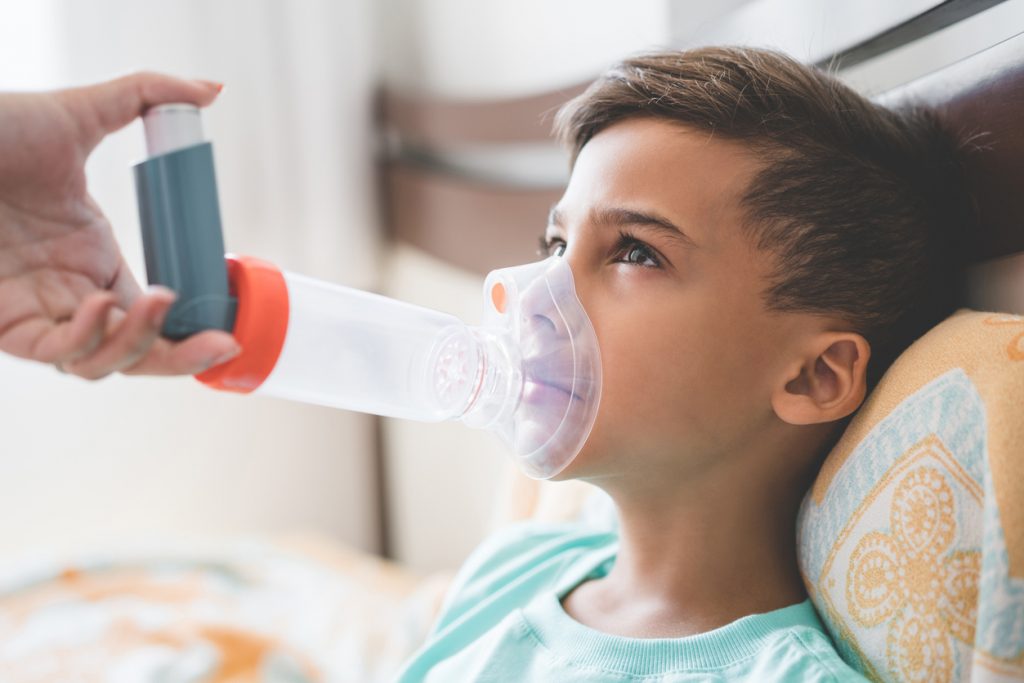10 things to know about asthma in Australia
So you or your child has just received an asthma diagnosis. The chances are you’re equal parts relieved to have an answer, and worried about what it might mean. Here is what you need to know about asthma in Australia.
1. What is asthma?
Asthma is a medical condition of the lungs that can cause temporary narrowing of the airways, making it difficult for a sufferer to breathe at times.
In an attack, this narrowing is caused by a number of factors. First, the smooth muscle around the airways can spasm, restricting them.
Secondly, an inflammatory response in the middle layer of a person’s breathing tube can cause it to swell, and finally, excess mucus is produced, further impacting a person’s ability to breathe in and out freely.
While asthma is an immune response, it is considered a chronic lung condition as opposed to an autoimmune condition.

2. What are the symptoms of asthma?
Coughing, tightness in the chest, wheezing and a feeling of not being able to take in enough air when you breathe are the primary symptoms of asthma. Asthma coughs are mostly dry, and can be accompanied by a high-pitched wheezing sound.
It’s important to note that not all symptoms have to be present for it to be considered asthma, and they don’t need to occur all the time. Many asthma sufferers are free from symptoms most of the time, until an attack is triggered.
3. How do you diagnose asthma in Australia?
While there is no single diagnostic test for asthma, your doctor will usually use a range of questions and tests to arrive at an asthma diagnosis for you or your child. A family history of asthma and allergies, prolonged evidence of difficulty breathing in and out, testing lung and breath capacity with something called a spirometer and ruling out other illness or obstruction can all be part of the diagnostic process.

4. What is an asthma action plan?
Depending on the severity of yours or your child’s asthma, your doctor will create a specific treatment plan to control the symptoms.
This is called an asthma action plan, and may include a long-term preventative component, as well as an acute treatment protocol you can implement in the event of an attack.
It’s also useful in helping patients and their carers recognise when asthma symptoms are worsening so that they can act to treat the attack early.
If your child has asthma, it’s important that this plan is shared with their teachers or other carers so that even when they are out of your care, their asthma is able to be monitored and controlled.
5. What is thunderstorm asthma?
Because asthma can be triggered in a number of different ways, including different grasses, moulds and pollens, seasonal asthma, or asthma that worsens depending on the time of year, is a common issue.
Thunderstorm asthma, however, is asthma that is triggered specifically by a storm that spreads pollen and grass particles across large distances. According to Asthma Australia, thunderstorm asthma occurs along the following pattern:
- A brewing thunderstorm sweeps up grass and pollen and bursts them into very small particles
- Winds from the storm carries these tiny particles across large distances
- These particles are small enough to be breathed deep into asthma sufferers’ lungs, triggering asthma attacks.
Because we have been experiencing La Nina weather events, the risk of an epidemic thunderstorm asthma event is heightened, according to Asthma Australia and the Department of Health and Human Services. As such, it’s especially important for asthma sufferers and their families to be vigilant.
6. How do you prevent asthma in Australia?
Asthma can present in many different ways, depending on an individual. What triggers an attack is also highly specific to that person, which is why understanding your own illness and what triggers it is so important for management. Some common triggers can include:
- Mould
- Dust
- Pet hair and dander
- Stress
- Illness such as respiratory infections like the common cold
- Physical exertion (exercise-induced asthma)
- Pollen, grasses and other allergens
- Allergic reaction to food.
One part of your strategy to manage and prevent asthma attacks should be having a good awareness of what triggers your condition (or your child’s) and taking steps to avoid these triggers where possible.
Of course, completely avoiding triggers is rarely possible, which means the other part of the strategy should include maintenance and prevention treatments.
7. Is asthma linked to allergies?
Many asthma triggers include common allergens, and about 80% of people with asthma will test positive to some form of allergy, according to allergy.org.au. In Australia and New Zealand, around 10% of the population are diagnosed asthmatics, and around 20% suffer from allergies.

8. Is asthma more common in childhood?
Asthma is one of the most common reasons for children being admitted to hospital in Australia, with 10% of Aussie kids being diagnosed. Genetics play a part in asthma diagnoses in kids, with many having a family history of either asthma or other allergies.
9. What is a nebuliser?
A nebuliser is a device that transforms liquid medicine into vapour which can then be inhaled as a fine mist.
10. Is COVID worse if you have asthma?
While studies have shown that people with asthma are not at a higher risk of contracting COVID-19 (and some have even shown asthmatics are slightly LESS likely to contract the virus) research also suggests that severe or uncontrolled asthma may worsen COVID-19 symptoms.
To speak with an InstantScripts Doctor:
Request a ConsultationIf you have run out of your script:
Request a ScriptThis article was authored by Bek Day, a writer and journalist with over 15 years of experience in the health and lifestyle space.
© InstantScripts
Level 8 / 637 Flinders St.,
Docklands VIC 3008

